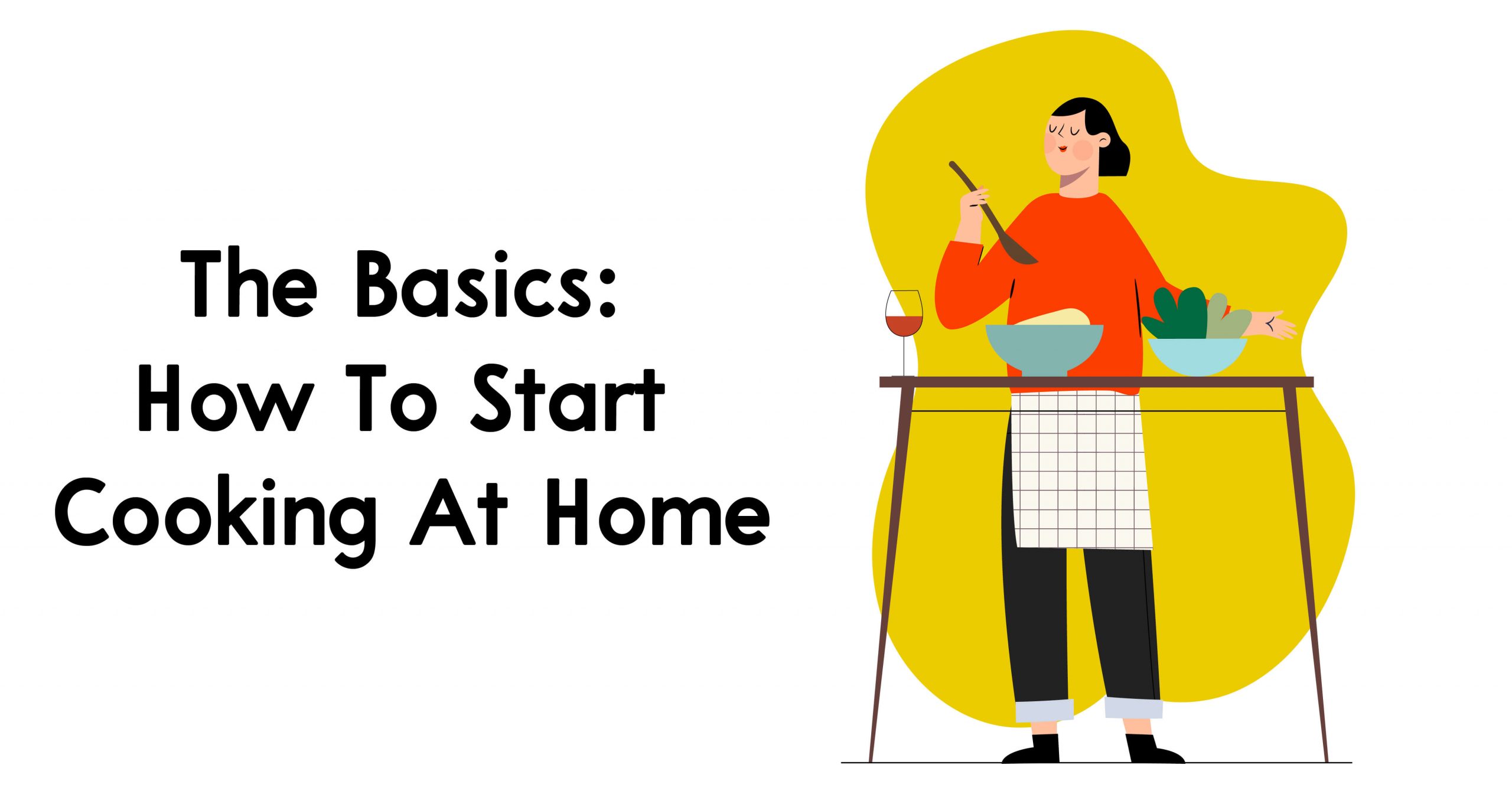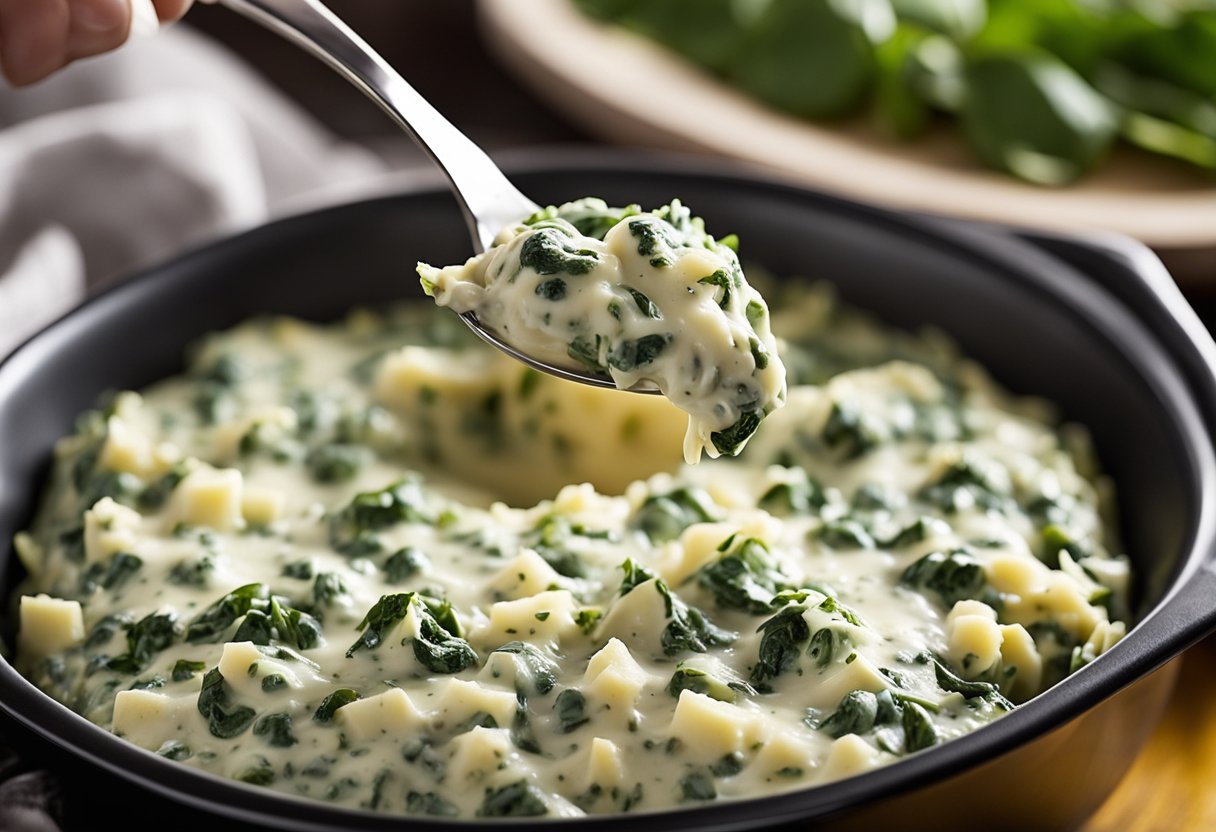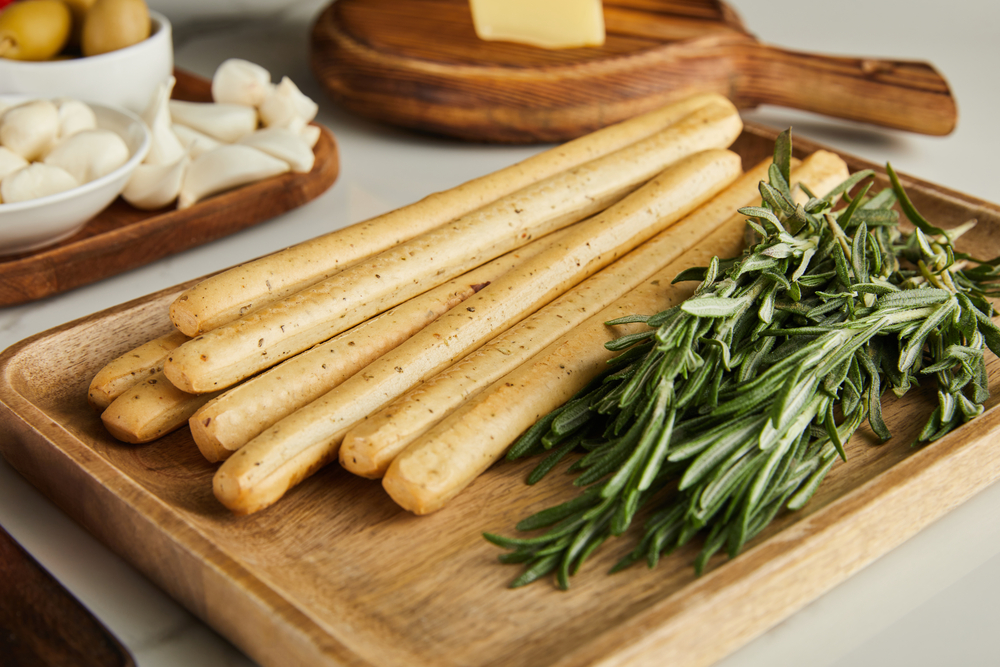Freezing fresh salsa is an excellent way to preserve the delicious taste of your homemade salsa for longer periods.
Whether you have a surplus of fresh salsa from your garden or you want to make a large batch of salsa ahead of time, freezing is a great option that will help you avoid wasting food and save you time in the kitchen.
In this article, I will share with you the best practices and tips for freezing fresh salsa, so you can enjoy your favorite dip all year round.
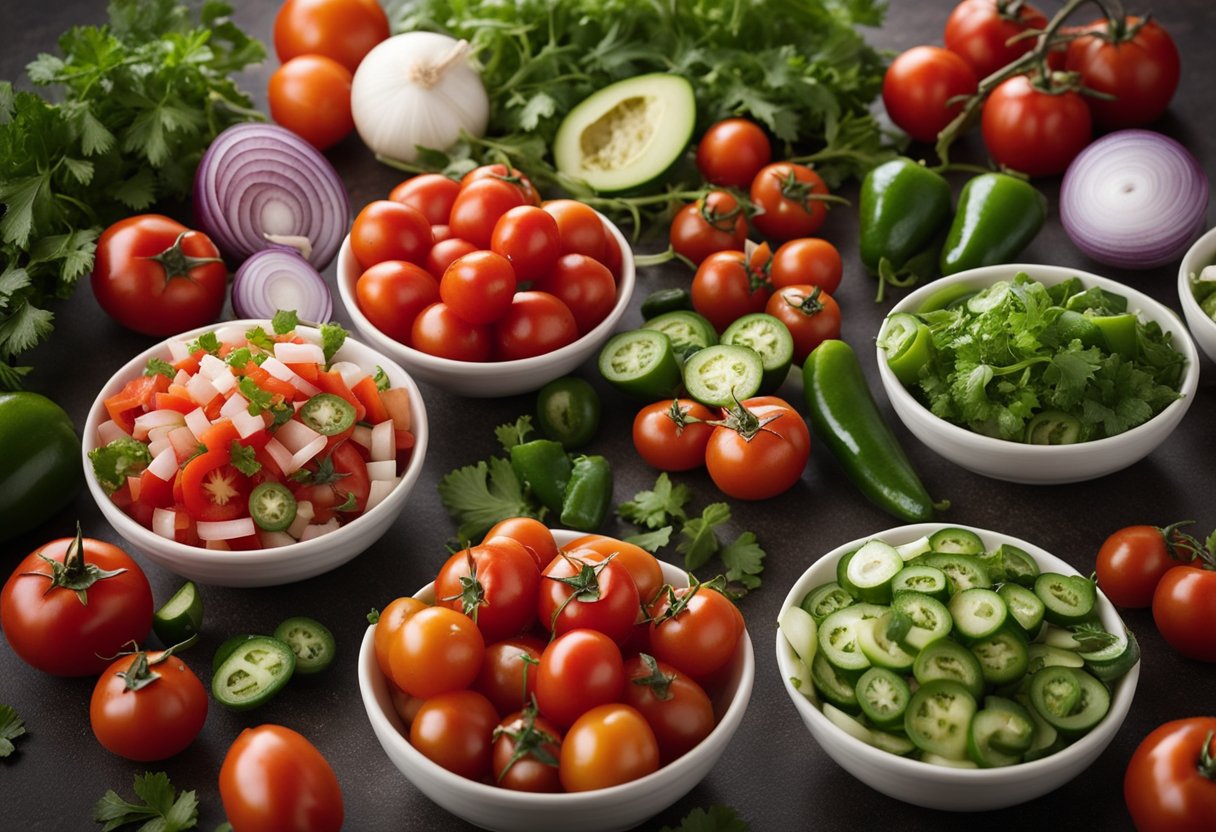
Understanding the basics of freezing salsa is essential to ensure that your salsa retains its flavor and texture after freezing. There are different types of salsa, and each one freezes differently.
For example, salsa made with cooked tomatoes freezes better than salsa made with fresh tomatoes. Similarly, chunky salsa that contains a lot of vegetables may not freeze as well as smooth salsa.
To freeze fresh salsa successfully, you need to know the right techniques and follow the proper steps.
Key Takeaways
- Freezing fresh salsa is an excellent way to preserve the delicious taste of your homemade salsa for longer periods.
- Understanding the basics of freezing salsa is essential to ensure that your salsa retains its flavor and texture after freezing.
- To freeze fresh salsa successfully, you need to know the right techniques and follow the proper steps.
Understanding the Basics of Freezing Salsa

As someone who loves salsa, I know how frustrating it can be to have to throw away leftover salsa that has gone bad. Freezing salsa is a great way to preserve it for later use.
Here are some basics to keep in mind when freezing salsa:
Freezing Homemade Salsa
If you have homemade salsa that you want to freeze, it’s important to make sure it’s freezer-safe. This means that it should be able to withstand the cold temperatures of the freezer without getting damaged.
To make freezer-safe salsa, you should use fresh ingredients and avoid using too much water. If your salsa is too watery, it may not freeze well.
Freezer-Safe Container or Bag
When freezing salsa, it’s important to use a freezer-safe container or bag. Freezer-safe containers are made from materials that can withstand the cold temperatures of the freezer without cracking or breaking.
Freezer-safe bags are also a good option, but be sure to use a bag that is specifically designed for freezing.
Portioning
Portioning is important when freezing salsa. You don’t want to freeze too much salsa in one container or bag because it will take longer to defrost. Instead, freeze salsa in smaller portions so that you can easily defrost only what you need.
Ice Crystals and Freezer Burn
When salsa is frozen, ice crystals can form on the surface. This is normal, but too many ice crystals can damage the texture and flavor of the salsa.
To prevent this, make sure to remove as much air as possible from the container or bag before freezing. If you notice freezer burn on your salsa, it’s still safe to eat, but it may not taste as good.
Defrosting Frozen Salsa
When defrosting frozen salsa, it’s important to do it slowly in the refrigerator. This will prevent the salsa from getting too warm and developing bacteria.
Once the salsa is defrosted, it may be a bit watery. Simply drain off any excess liquid and give it a stir.
How Long Does Salsa Last in the Freezer?
Salsa can last up to 3 months in the freezer. After that, it may start to lose its flavor and texture. Be sure to label your containers or bags with the date so that you know when it was frozen.
In summary, freezing salsa is a great way to preserve it for later use. Just be sure to use freezer-safe containers or bags, portion it out, and defrost it slowly in the refrigerator. With these basic tips, you can enjoy your favorite salsa all year round.
Selecting and Preparing the Ingredients
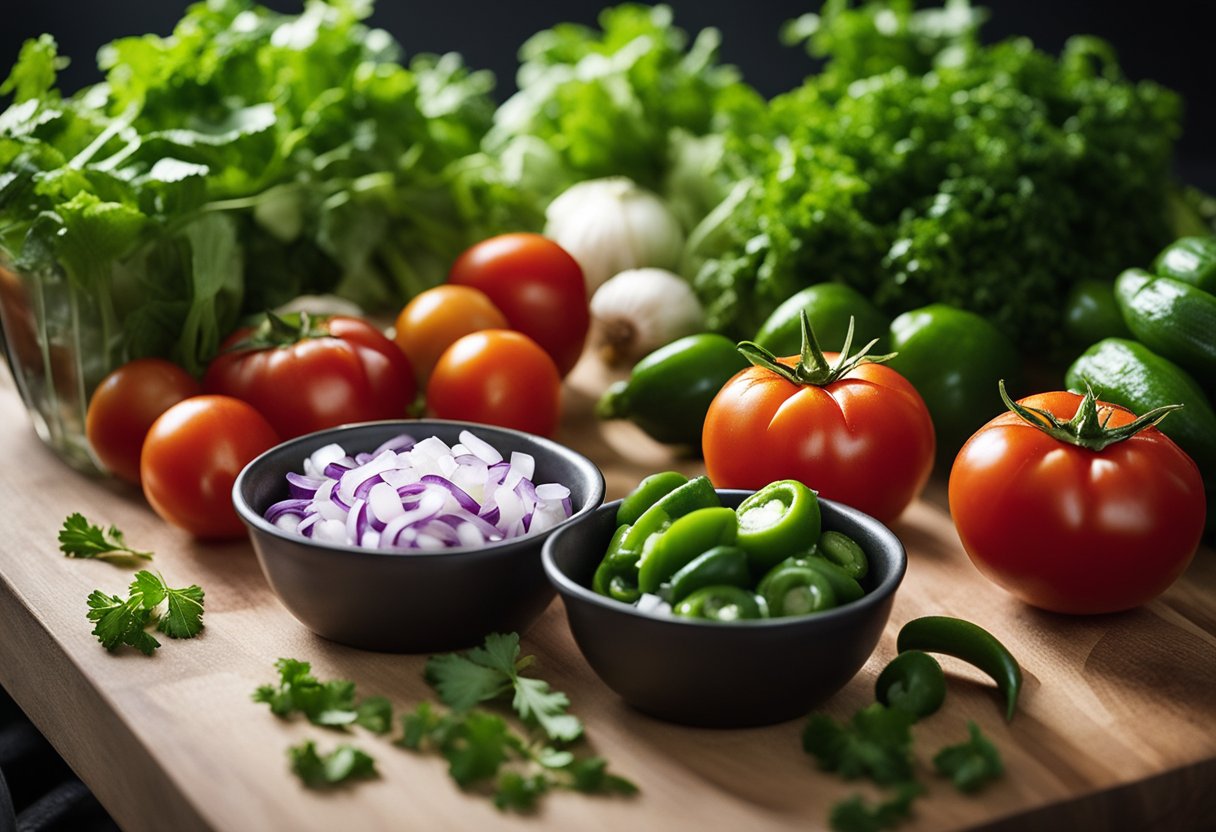
When making fresh salsa, the ingredients you use are key to creating a delicious salsa that freezes well.
Here are some tips for selecting and preparing the ingredients for your homemade salsa:
- Tomatoes: Use fresh, ripe tomatoes for the best flavor. If possible, use tomatoes from your garden or a local farmer’s market. Avoid using canned tomatoes, as they can become mushy when frozen.
- Onion: Red onion works well in salsa, but you can also use white or yellow onion. Chop the onion finely so that it blends well with the other ingredients.
- Garlic: Fresh garlic is the best option for homemade salsa. Use garlic powder only if you don’t have fresh garlic on hand.
- Jalapeno peppers: Remove the seeds and membranes from the jalapeno peppers to reduce the heat level. If you want a spicier salsa, leave some of the seeds and membranes in.
- Cilantro: Fresh cilantro adds a lot of flavor to salsa. Use the leaves and stems, but discard any tough stems.
- Lime juice: Fresh lime juice adds a bright, tangy flavor to salsa. Use freshly squeezed lime juice for the best flavor.
- Salt and pepper: Add salt and pepper to taste. Start with a small amount and adjust as needed.
- Other ingredients: You can add other ingredients to your salsa, such as mango, beans, or corn. Just make sure that they are fresh and that they complement the other flavors in the salsa.
Once you have selected your ingredients, it’s time to prepare them. Here are some tips for preparing the ingredients for fresh salsa:
- Chop the ingredients finely: Chopping the ingredients finely will help them blend together better and create a smoother texture.
- Use a food processor: If you want a smoother salsa, use a food processor to chop the ingredients. Just be careful not to over-process the salsa, as it can become too watery.
- Adjust the seasoning: Taste the salsa as you go and adjust the seasoning as needed. Add more salt, pepper, or lime juice to taste.
- Let the salsa sit: Let the salsa sit for at least 30 minutes before freezing. This will allow the flavors to meld together and create a more delicious salsa.
By selecting and preparing fresh ingredients, you can create a delicious salsa that freezes well and can be enjoyed all year round.
Cooking the Salsa
To prepare the salsa for freezing, I first simmer it in a pan to thicken it up and remove excess liquid. This helps to prevent freezer burn and ensures that the salsa retains its flavor and texture after thawing.
To do this, I pour the salsa into a saucepan and keep it over medium-low heat until half of the liquid has evaporated. This usually takes around 45 minutes.
Thicker salsa will freeze better, so I recommend simmering until the desired thickness is achieved.
I also add a cornstarch paste to the salsa to help thicken it up further. To do this, I mix 1 tablespoon of cornstarch with 1 tablespoon of water and then stir it into the simmering salsa.
This helps to create a thicker, more dip-like consistency that is perfect for freezing.
Once the salsa has reached the desired consistency, I remove it from the heat and let it cool to room temperature. This usually takes around 30 minutes. It’s important to let the salsa cool completely before freezing to avoid any condensation forming inside the container.
Finally, I transfer the cooled salsa into a freezer-safe container, leaving about an inch of space at the top to allow for expansion during freezing. I label the container with the date and contents, and then place it in the freezer.
When I’m ready to use the frozen salsa, I simply thaw it in the refrigerator overnight. It makes a perfect topping for tacos, nachos, or any other Mexican-inspired dish.
Storing the Salsa
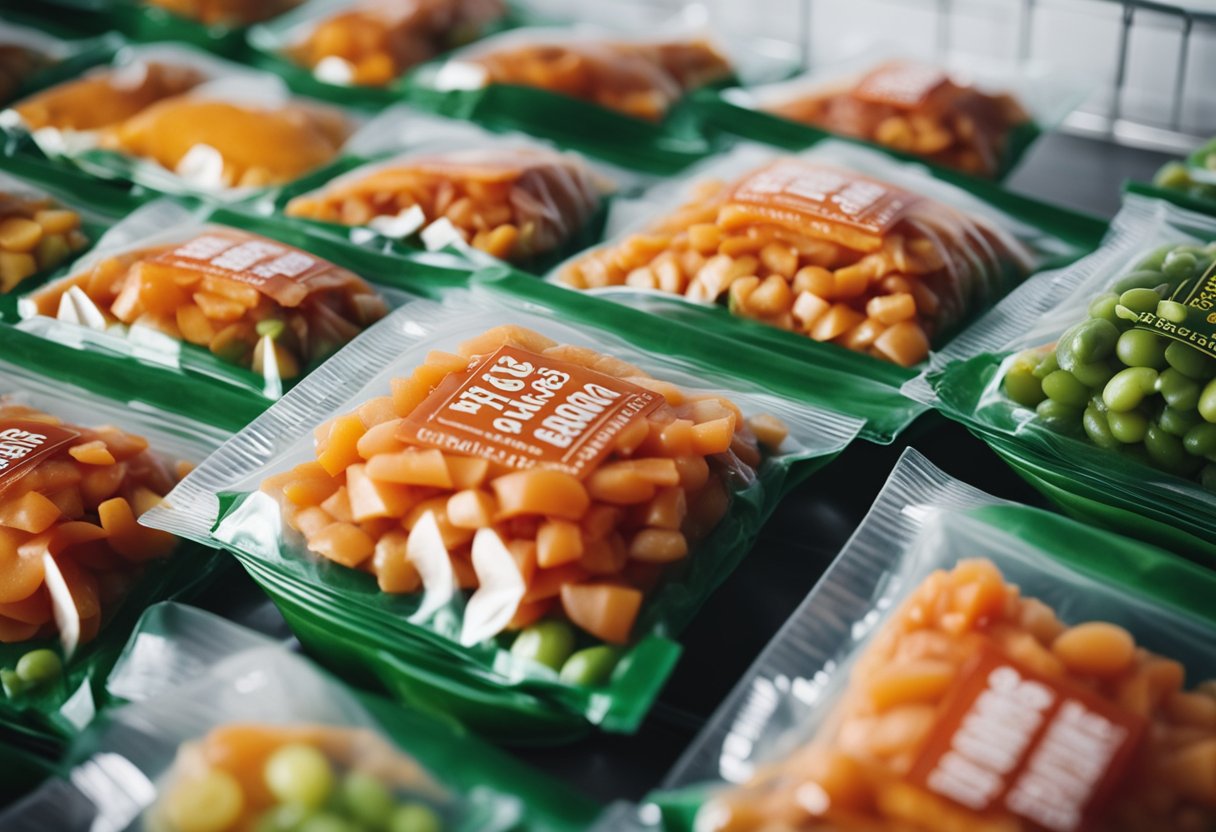
Once you have frozen your fresh salsa, it’s important to store it properly to ensure it stays fresh and tasty.
Here are some tips for storing your salsa:
- Use freezer bags: Freezer bags are the best option for storing salsa in the freezer. They are durable, airtight, and easy to label. Be sure to use bags that are specifically designed for the freezer, as they are thicker and more durable than regular plastic bags.
- Leave some headspace: When filling your freezer bags with salsa, be sure to leave some headspace at the top. This will allow the salsa to expand as it freezes without bursting the bag.
- Label the bags: Be sure to label your freezer bags with the date and contents. This will help you keep track of how long the salsa has been in the freezer and what type of salsa it is.
- Store in the freezer: Once your salsa is properly packaged and labeled, store it in the freezer. Frozen salsa can last for up to 4 months in the freezer.
- Thaw before using: When you’re ready to use your frozen salsa, simply thaw it in the refrigerator overnight. Once thawed, give it a good stir and it should be ready to use.
It’s important to note that freezing salsa can affect its texture and consistency. Frozen salsa may become watery or lose some of its crunch. However, the flavor and nutrition of the salsa should remain intact.
If you’re interested in canning your salsa instead of freezing it, be sure to follow proper canning instructions. Canned salsa can have a longer shelf life than frozen salsa, but it requires a bit more effort and equipment.
Overall, freezing fresh salsa is a great way to preserve it for later use. With proper storage and labeling, you can enjoy your homemade salsa for up to 4 months in the freezer.
Serving the Salsa
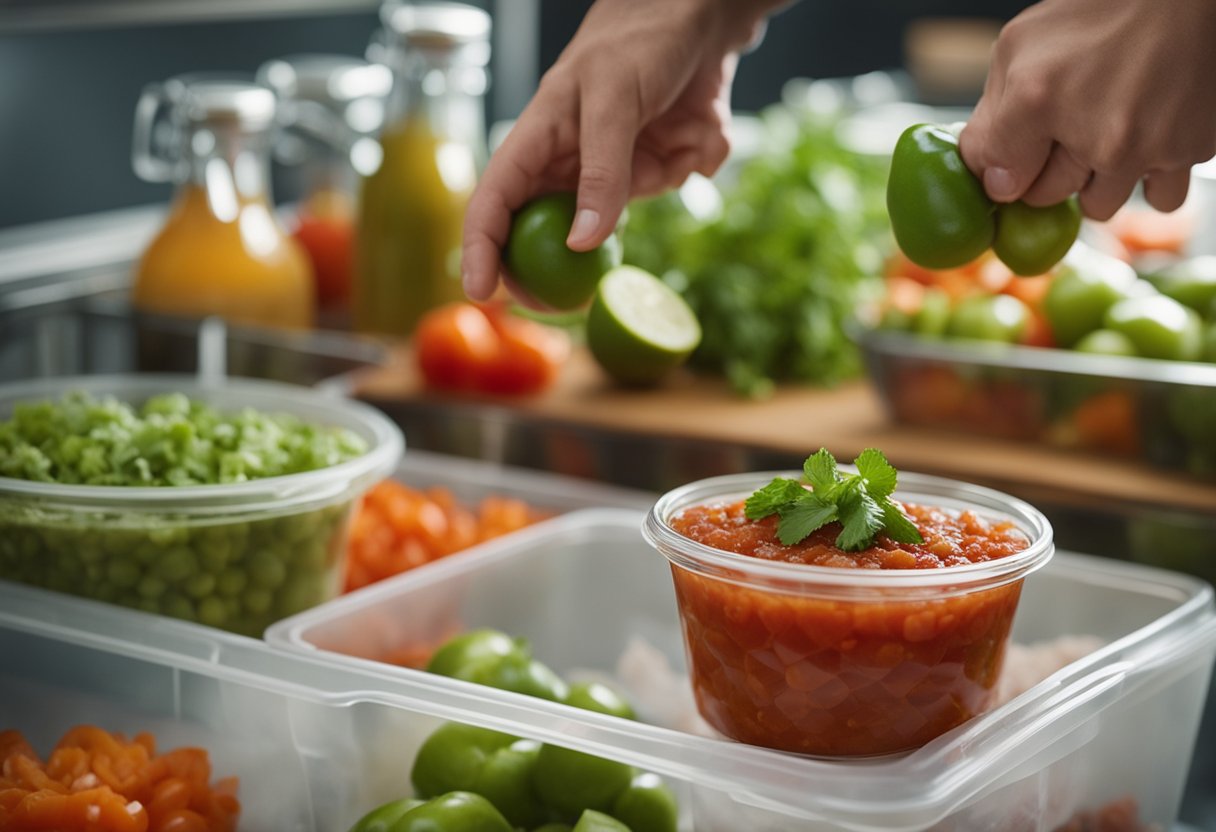
Once you’ve frozen your salsa, you may be wondering how to serve it. There are a few different ways to enjoy frozen salsa, depending on your preferences.
One option is to defrost the salsa in the refrigerator overnight. Once it’s thawed, give it a good stir and it should be ready to go. You can then serve it as a side dish or as a topping for salads or other dishes.
Another option is to use the frozen salsa as a base for cooking. For example, you could use it as a sauce for enchiladas or as a topping for tacos. If the salsa is too watery after thawing, you can simmer it on the stove to thicken it up.
When serving salsa, it’s important to use a clean cutting board and knife to avoid cross-contamination. You can also add some fresh ingredients to the thawed salsa, such as chopped cilantro or lime juice, to give it a little extra flavor.
Overall, frozen salsa is a versatile and convenient ingredient to have on hand. Whether you’re using it as a side dish or as a base for cooking, it can add a delicious Mexican flavor to your meals.
Understanding the Different Types of Salsa
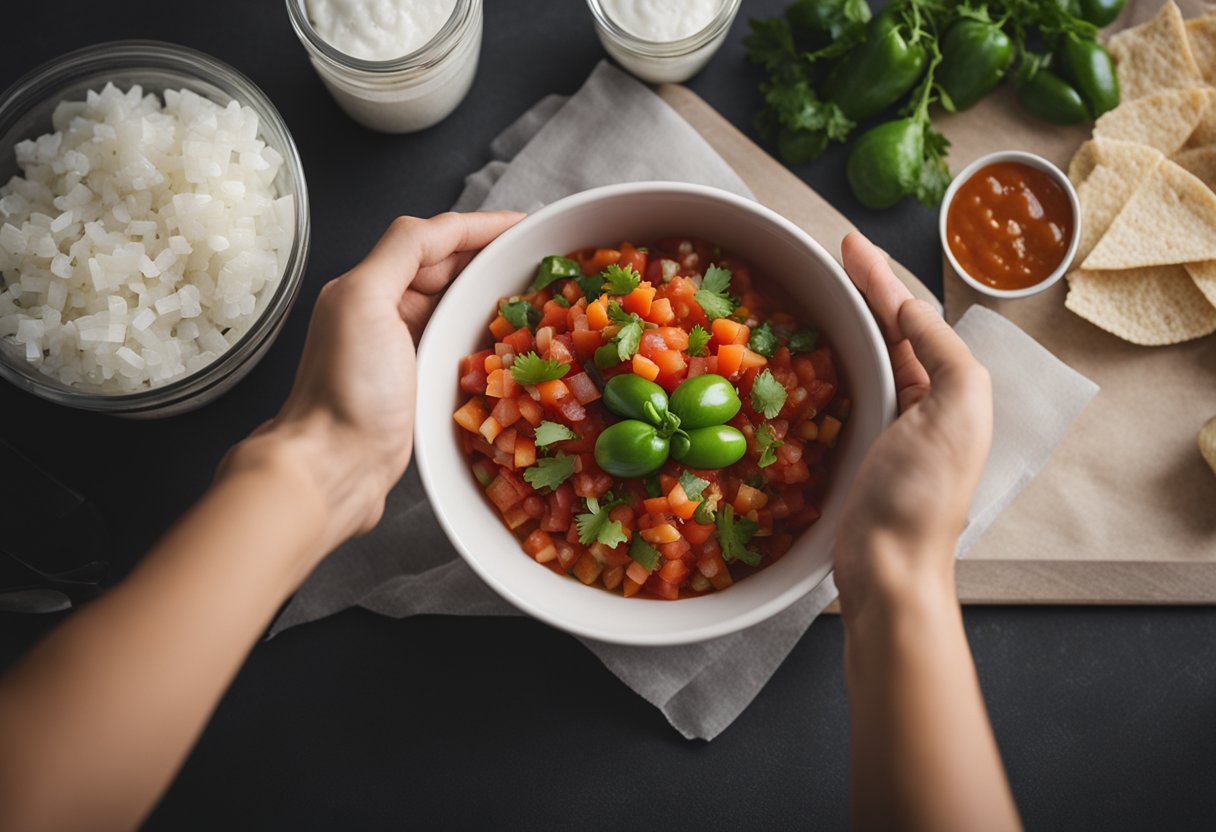
As someone who loves salsa, I know that there are many different types of salsa available. In this section, I will explain some of the most common types of salsa and how they differ from one another.
Salsa Roja
Salsa Roja is a tomato-based salsa that is typically made with roasted tomatoes, onions, garlic, and chili peppers. It has a rich, smoky flavor and is often used as a dip for tortilla chips.
Salsa Roja can be spicy or mild, depending on the type of chili peppers used.
Salsa Verde
Salsa Verde is a green salsa that is typically made with tomatillos, jalapeños, onions, and garlic. It has a tangy, slightly sour flavor and is often used as a condiment for tacos and other Mexican dishes.
Salsa Verde can be spicy or mild, depending on the amount of jalapeños used.
Pico de Gallo
Pico de Gallo is a fresh, uncooked salsa that is made with chopped tomatoes, onions, jalapeños, and cilantro. It has a chunky texture and a bright, fresh flavor. Pico de Gallo is often used as a topping for tacos and other Mexican dishes.
Salsa Fresca
Salsa Fresca is similar to Pico de Gallo, but it often contains additional ingredients like avocado, corn, or black beans. It has a fresh, bright flavor and is often used as a dip for tortilla chips.
Mango Salsa
Mango Salsa is a fruity salsa that is made with diced mango, red onion, jalapeños, and cilantro. It has a sweet, tangy flavor and is often used as a topping for fish tacos or grilled chicken.
Overall, there are many different types of salsa available, each with its own unique flavor and texture. Whether you prefer spicy or mild, chunky or smooth, there is a salsa out there for everyone.
Frequently Asked Questions
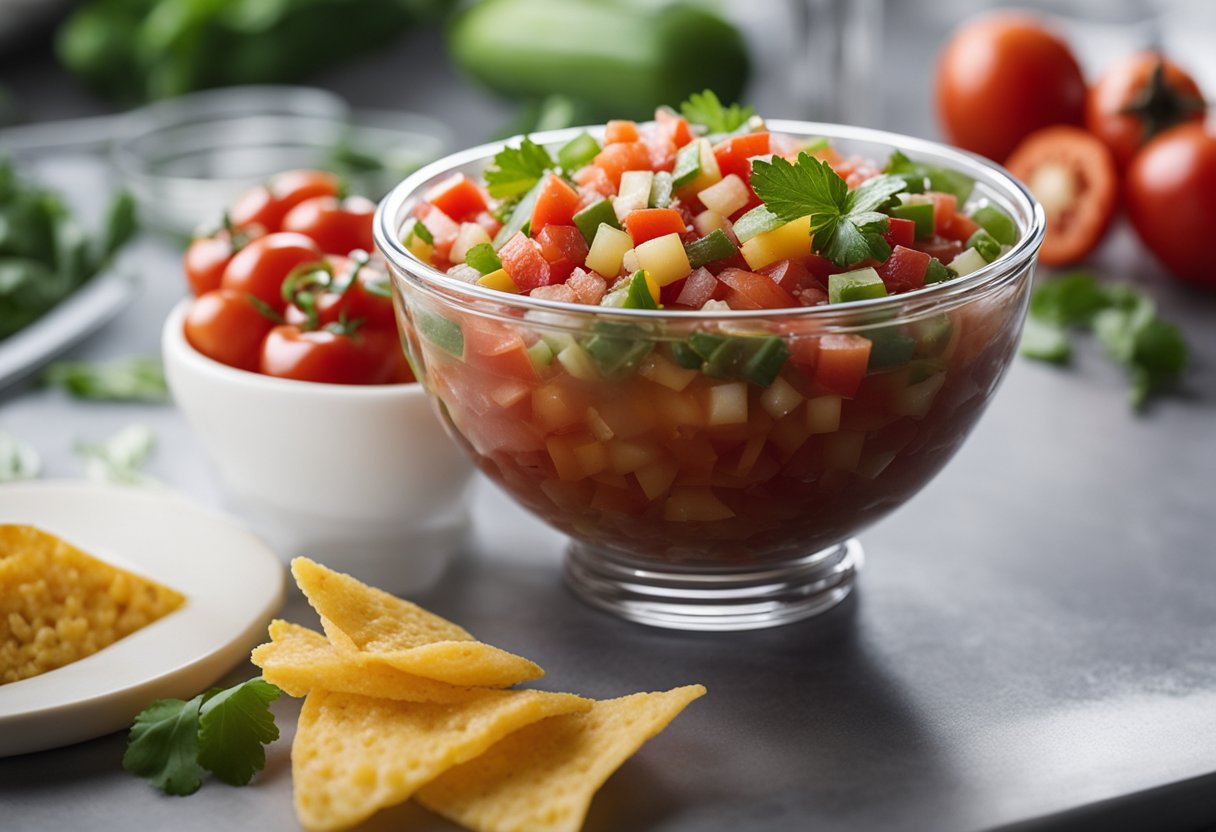
What are the best containers to freeze salsa in?
The best containers to freeze salsa in are airtight, freezer-safe containers. Mason jars, plastic containers, and freezer bags are all great options.
Make sure to leave some headspace in the container to allow for expansion as the salsa freezes.
How can you preserve fresh salsa?
To preserve fresh salsa, you can freeze it or can it. Freezing is a great option if you have a large batch of salsa that you won’t be able to eat before it goes bad.
Canning is a good option if you want to store the salsa at room temperature for an extended period of time.
Can homemade salsa be frozen?
Yes, homemade salsa can be frozen. Salsa made with fresh vegetables can be frozen for up to 6 months. However, salsa made with cooked vegetables may not freeze as well and may have a different texture when thawed.
How do you thaw frozen salsa?
To thaw frozen salsa, remove it from the freezer and place it in the refrigerator overnight. Alternatively, you can place the frozen salsa in a bowl of cold water to speed up the thawing process. Do not thaw frozen salsa in the microwave.
What is the Six Sisters Freezer salsa recipe?
The Six Sisters Freezer salsa recipe is a popular recipe that can be made in large batches and frozen for later use. It includes diced tomatoes, onion, jalapeno pepper, garlic, cilantro, lime juice, and salt. You can find the full recipe online.
Can you freeze cooked salsa instead of canning?
Yes, you can freeze cooked salsa instead of canning. Cooked salsa can be frozen for up to 6 months. However, the texture of the salsa may change slightly when thawed, so it may not be as crisp as fresh salsa.


